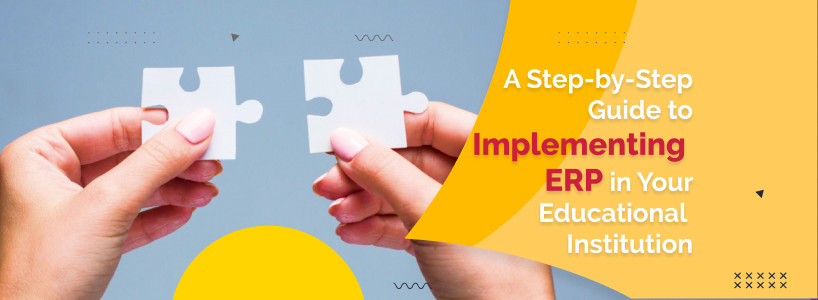In todays fast-paced academic landscape, managing operations manually is no longer efficient. Educational institutions are rapidly adopting ERP for schools and colleges to streamline administrative tasks, enhance communication, and improve decision-making. Implementing an ERP (EduAutomate) System is a significant step that requires strategic planning and execution. Heres a step-by-step guide to help your institution make the transition smoothly.
Step 1: Define Objectives and Requirements
Before choosing an ERP system, identify the key challenges your institution facesbe it Attendance tracking, fee management, exam scheduling, or communication. Set clear objectives such as improving operational efficiency, data accuracy, or parent-teacher collaboration. A requirement analysis helps in selecting the right ERP solution tailored to your needs.
Step 2: Form an ERP Implementation Team
Create a team comprising administrators, IT staff, teachers, and department heads. This team will oversee the implementation, address concerns, and ensure smooth collaboration between departments. Assign specific roles like project coordinator, data migration lead, and training facilitator.
Step 3: Choose the Right ERP Vendor
Select a reliable vendor with experience in educational ERP systems. Look for features such as cloud-based access, mobile compatibility, customizable modules, and integration with existing systems. Check vendor reviews, support quality, and data security standards. A well-chosen vendor becomes your long-term technology partner.
Step 4: Data Migration and System Configuration
This stage involves transferring existing datastudent records, staff details, course informationinto the new system. Ensure proper data cleaning to avoid duplications or errors. Configure the ERP based on your institutional workflow and user access levels. Most vendors offer initial setup assistance and configuration support.
Step 5: Staff Training and User Acceptance
Conduct hands-on training sessions for Administrative staff, teachers, and other end users. Provide manuals, video tutorials, and practice modules. Encourage feedback during this phase. A high user acceptance rate is critical for successful implementation. Choose an ERP that is user-friendly for educational institutions to reduce resistance and boost productivity.
Step 6: Pilot Testing
Test the ERP system in a limited setting before full-scale deployment. Run critical operations like student enrollment, fee collection, and timetable creation to identify any technical or usability issues. Use the pilot results to refine the system.
Step 7: Go Live and Monitor
After successful testing, launch the ERP institution-wide. Monitor system performance, user engagement, and issue logs. Ensure that your ERP vendor provides ongoing support and updates. Regular reviews and upgrades will ensure your system evolves with your institutions growing needs.
Final Thoughts
Implementing an ERP system in your educational institution is a transformative move that streamlines processes and enhances overall efficiency. By following these steps, you ensure a smooth transition, maximize ROI, and set the foundation for data-driven decision-making.
Looking to get started? Explore the best ERP for schools and colleges and discover user-friendly ERP solutions for educational institutions that match your goals.
